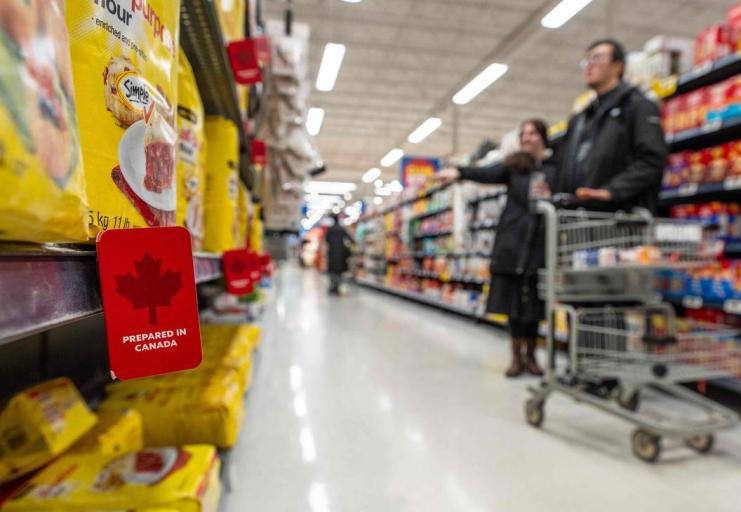
Data showed Canada's annual inflation unexpectedly rose to 2.6 per cent in February, beating expectations. With the end of the consumption tax cut in the middle of last month, prices, which were already rising generally, have been pushed up again.
This is the first time in seven months that consumer price inflation has broken the 2 per cent mark, reaching the midpoint of the Bank of Canada's 1 per cent to 3 per cent target range. Inflation was 1.9 per cent in January.
Statistics Canada noted that without the tax credit, inflation would have hit 3 per cent in February. The increase in inflationary pressures could keep the Bank of Canada from cutting interest rates next month unless other economic indicators such as gross domestic product (GDP) and unemployment deteriorate significantly.
Statistics Canada further showed monthly price growth of 1.1 per cent in February, up from 0.1 per cent in January.
Economists polled by Reuters had forecast annual inflation of 2.2 percent in February and a monthly gain of 0.6 percent. The Bank of Canada said last week it expected inflation to hit 2.5 per cent in March as tariff-related uncertainty weighed on prices.
While prices in the entire consumer Price Index (CPI) basket rose almost across the board, the gains were particularly pronounced in restaurant food, some clothing items and alcohol, which rose especially after the excise tax cut was removed.
"Restaurant food prices were the main driver of the acceleration in the headline CPI in February," Statistics Canada said.
Food prices rose 1.3 percent from a year earlier, while clothing and footwear rose 1.4 percent, the data showed. Other price drivers in the CPI basket included transport (up 3 per cent) and persistently high housing costs (up 4.2 per cent).
Economists believe the tax cut distorts headline inflation figures, while core inflation more accurately reflects trends in consumer prices.
The Bank of Canada's two preferred core inflation measures - CPI-median and CPI-adjusted; Both rose to 2.9 percent in February from 2.7 percent in January. The currency swap market is signalling a 59 per cent chance of a pause in the rate-cutting cycle next month.

Recently, according to 9To5Mac, the Apple Podcasts app was exposed to have the problem of automatically redirecting unsubscribed programs, and some of the redirected programs were suspected to contain malicious links.
Recently, according to 9To5Mac, the Apple Podcasts app was …
Recently, multiple Federal Reserve officials have publicly …
Ukrainian President Vladimir Zelensky met with French Presi…
In November 2025, South Korean e-commerce giant Coupang was…
On December 2, 2025, the international silver market witnes…
On November 30 local time, a report released by the Stockho…